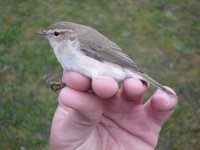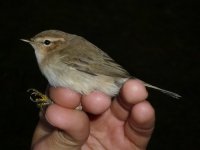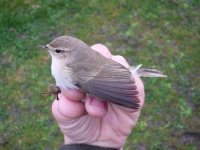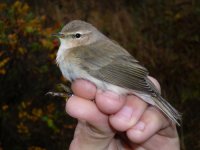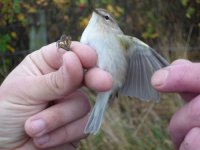Ade George
Well-known member
I caught these two Chiffs and they certainly have an eastern look to them but wouldnt mind peoples opinions on whether they could be tristis or fulvescens race.
Note: the camera flash makes the bird look slightly darker than in natural light but without the flash the picture give a more cold look to the bird
Note: the camera flash makes the bird look slightly darker than in natural light but without the flash the picture give a more cold look to the bird




